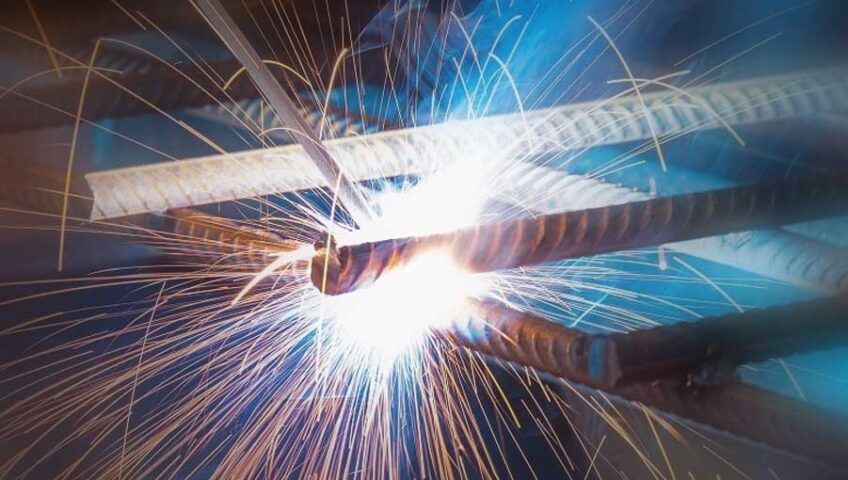Arc welding is a widely used method in the field of industrial fabrication and construction, especially within the realms of architectural welding and architectural steel fabrication. This process involves the use of an electric arc to melt and join metals, a technique fundamental in creating strong, durable structures in various architectural projects. Understanding what arc welding is, its applications, and its significance in architectural steel fabrication is crucial for professionals in the industry.
The Process of Arc Welding
Arc welding uses an electric arc to generate heat of up to 6,500 degrees Fahrenheit, which is sufficient to melt metal. This heat source is created between a metal stick (electrode) and the metals being joined. As the metals reach their melting points, a molten pool is formed, allowing them to fuse together as they cool. This process is not only efficient but also allows for a high degree of precision, making it a preferred method in architectural welding.
Types of Arc Welding
Several types of arc welding are utilized in architectural steel fabrication, each suited to different applications and materials. Some common types include Shielded Metal Arc Welding (SMAW), Gas Tungsten Arc Welding (GTAW), and Gas Metal Arc Welding (GMAW). SMAW, often used in construction and repair work, is versatile and relatively straightforward. GTAW, known for its precision, is ideal for welding thin sections of stainless steel, while GMAW is fast and efficient, suitable for welding thicker sections of metal.
Materials Used in Arc Welding
Arc welding is compatible with a variety of metals, crucial for its application in architectural steel fabrication. These metals include carbon steel, stainless steel, aluminum, and cast iron, among others. The choice of metal depends on the requirements of the architectural project, considering factors such as strength, durability, and appearance.
Applications in Architectural Welding
In the field of architectural welding, arc welding is integral in creating frameworks for buildings, bridges, and other structures. Its ability to produce strong, durable welds makes it suitable for architectural steel fabrication, where structural integrity is paramount. Arc welding is used in constructing steel frames, reinforcing bars, and in the installation of metal cladding, all of which are essential elements in modern architecture.
Safety Considerations in Arc Welding
Safety is a primary concern in arc welding, given the high temperatures and intense light generated by the electric arc. Welders must wear protective gear, including helmets with visors, gloves, and appropriate clothing, to shield against heat, sparks, and ultraviolet radiation. Ventilation is also crucial to avoid inhalation of harmful fumes.
Advancements in Arc Welding Technology
Technological advancements have significantly impacted arc welding, particularly in architectural steel fabrication. Modern welding machines offer greater control over heat input and arc stability, improving the quality of welds. Automation and robotic welding are also becoming increasingly common, enhancing efficiency and consistency in large-scale architectural welding projects.
Challenges and Solutions in Arc Welding
One of the challenges in arc welding is dealing with various metals and their different properties, such as melting points and thermal conductivity. This requires skilled welders who understand the nuances of each material. Additionally, distortion of materials due to heat is a common issue, which can be mitigated through proper welding techniques and controlling the heat input.
The Role of a Welder in Architectural Fabrication
Welders play a crucial role in architectural steel fabrication, requiring not only technical skills in arc welding but also an understanding of architectural designs and structural requirements. They must interpret blueprints and ensure that their welding work aligns with the specified architectural specifications.
Quality Control in Arc Welding
Quality control is essential in architectural welding, as the integrity of the structure depends on the quality of the welds. This involves regular inspections, testing of welded joints, and adherence to welding codes and standards. Ensuring high-quality welds is paramount in architectural steel fabrication, where the safety and durability of the structure are of utmost importance.
Cost-Efficiency in Arc Welding
Cost-efficiency is another important aspect of arc welding in architectural steel fabrication. While the initial investment in welding equipment and training can be significant, the efficiency and durability of arc welding result in long-term savings. It reduces the need for repairs and maintenance, making it a cost-effective solution for architectural projects.
Conclusion
Arc welding is a fundamental technique in the field of architectural welding and architectural steel fabrication. Its ability to create strong, durable joins in a variety of metals makes it indispensable in the construction of modern architectural structures. As technology advances, the efficiency, safety, and environmental impact of arc welding continue to improve, underscoring its critical role in the industry. For professionals in architectural fabrication, mastering arc welding is essential to building structures that are not only aesthetically pleasing but also structurally sound and durable.

